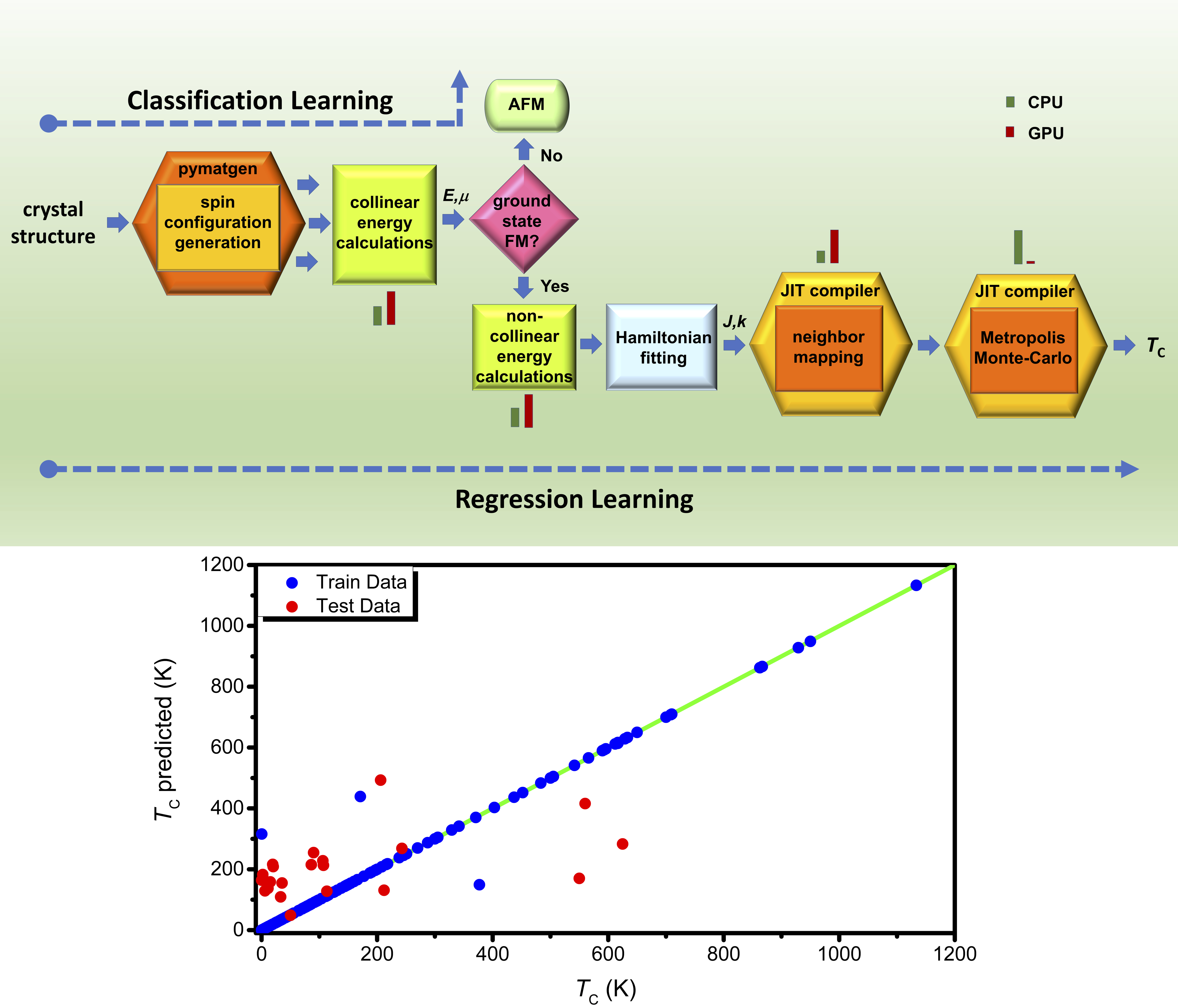High-throughput discovery of 2D magnets
-Priti Bangal
2D materials are atomically thin, single-layered films arranged in a crystal structure, which have potential applications in next-generation electronics and optoelectronic devices. Ferromagnetism (FM) in such materials ‒ the mechanism by which they act as magnets ‒ was considered implausible until a few years ago. In 2017, scientists discovered low-temperature FM in 2D materials, which has led to significant advances in the fields of nanotechnology and electronics.
At low temperatures, ferromagnetic materials are capable of retaining their magnetic properties well. However, the magnetic order in such materials gets disturbed as the temperature increases. The temperature at which materials lose their FM properties is known as the Curie point. Curie point is therefore a critical property of ferromagnetic materials for practical applications. However, determining the Curie temperature involves a set of very complex calculations.
A research team from IISc has now developed an open source computer code to estimate Curie temperatures from the crystal structures of materials. The study combines informatics using open source databases and machine learning to discover as well as predict the Curie temperatures of 2D ferromagnetic (2DFM) materials.

The team took a three-fold approach. First, they developed a fully-automated computer code that helps calculate Curie temperatures, eliminating the need for manual heuristic calculations. Second, they were able to identify 26 high-temperature 2DFM materials from large open source databases, including some important magnetic materials that have been overlooked so far. These materials can be ideal candidates to use in high-temperature devices.
Thirdly, the team developed a machine learning model to predict the Curie temperature of materials. Although the model currently uses limited data, if it is trained with a sufficiently large dataset of 2DFM materials, it might ultimately be able to replace the computer code, the researchers say. They believe that this would significantly help advance the practical applications of 2D magnetic materials.
REFERENCE:
Arnab Kabiraj, Mayank Kumar and Santanu Mahapatra, “High-throughput discovery of high Curie point two-dimensional ferromagnetic materials”, npj Computational Materials, Nature Publishing Group, 2020.
https://www.nature.com/articles/s41524-020-0300-2
Live execution of computer code: https://youtu.be/HJkR-03OzBI(in workstation), https://youtu.be/GQaFfm29LR4 (in high-performance node)
End-to-end code and ML Pickle: https://osf.io/6ebjp/ and https://github.com/NSDRLIISc
Presentation: https://youtu.be/RhEQOZawnZ0
Lab website: http://nsdrl.dese.iisc.ac.in/






